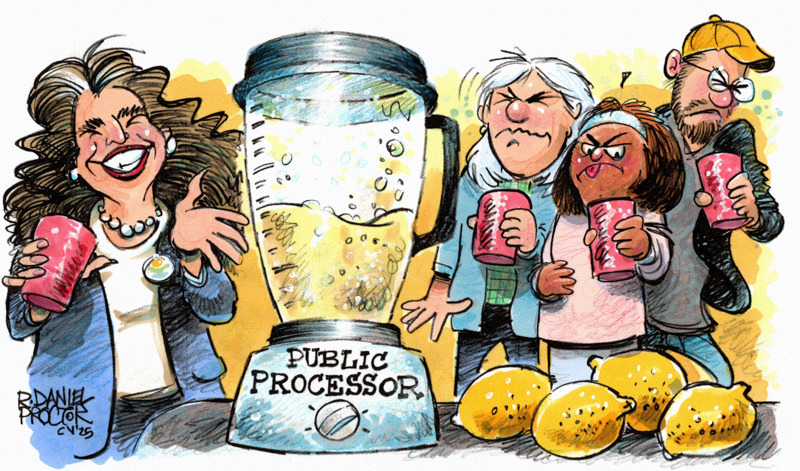“If I ain’t up on it, I’m down on it”
By George Korda
Where government projects are concerned, a “public process,” in which the public gets to comment or offer suggestions on public-sector projects, can be friend or foe. Knoxville Mayor Indya Kincannon’s administration’s effort in August to sell Chilhowee Park land used for generations by the Tennessee Valley Fair ran face-first into a buzzsaw best described by a political adage: “If I ain’t up on it, I’m down on it.” The Kincannon team wanted to fast-track a city council vote on the sale: news stories said council members didn’t know about the impending vote until hearing about it from the news media. However, alerted to the timing scheme, interested members of the public pushed back. What was supposed to be a quick and mostly silent maneuver turned into a quagmire—and eventually, failure. I was on a WATE-TV television show with two other panelists discussing the Chilhowee Park issue; both said that a public process should have been conducted. I said that a public process can be nothing more than an administration listening to whoever turns up at a public meeting, saying they’ve heard from both sides, had listened to the public, and then go forward with pretty much the original plan.
Calls for public processes are abundant in modern local politics. Whether they come to anything is another issue: Public processes typically are created by governments or non-profit organizations (sometimes in concert with government) to find a “collaborative” way forward on a subject affecting the public. It’s the governing equivalent of putting a lot of different items into a blender, mixing them, and seeing what it tastes like. But a public process takes time, involves compromise, risks creating anger—and can interfere with a political entity’s goal. However, a public process might also save a city or county administration from itself.

Among some, the words “public process” have taken on a golden aura of a municipal planning holy grail. But there are a variety of different interpretations of what it means. Saying “public process” is somewhat equivalent to telling a friend they should “get counseling” for a personal or domestic problem. The expectation is that counseling will root out and solve the conflict. But what kind of counseling? By whom? For how long? What assurance is there that the counselor is any good? If one counselor’s approach differs from another’s, might that mean a completely different outcome? Similar dynamics exist for public processes.
A public process involves one or more of the following: public meetings, mailed surveys, phone surveys, internet chats or zoom conversations, or other tactics. Nine Counties, One Vision (9C1V), which ran from 2000-2005, was a long-running and probably most-publicized public process to occur in these parts: the intent was to establish a “vision” for the future of Knoxville and adjacent counties. But it can also be argued that 9C1V is an example of much ado about very few. Of the approximately 700,000 people in the nine counties, only a fraction of a fraction participated in the visioning and idea meetings.
Nevertheless, 9C1V’s “collaborative” approach inspired passionate defenders. In a 2002 Leadership Knoxville roundtable discussion, after a participant said that any elected official who didn’t support 9C1V should be voted out of office, I said that the taxpayers of one county want to know what their leaders are doing with their tax dollars, for them, in their county, not necessarily that they’re promoting the well-being of another county, and no elected official would lose their job over not wholeheartedly adhering to 9CIV. Furthermore, if you search the internet for “Nine Counties, One Vision accomplishments to-date,” there are mentions of various task forces and planning entities that are offshoots of 9C1V. One such East Tennessee Quality Growth, “Achieving Quality Growth Through Regional Cooperation & Local Action.” However, the last regional event was posted in 2015: the “news” tab is empty.
That’s not saying there aren’t useful things that came out of 9C1V, or from other public processes. They can be very good things, giving people a voice where they’d otherwise go unheard. But mere use of the term to ward off criticism is motion in place of action. And the issues still exist of speeded-up legislation to avoid public awareness and public processes as smokescreens for an administration’s plans. At present, who is it that decides whether a public process is lip service or truly seeking public comment? The public. If it cares enough to be up on it.

Comments are closed.